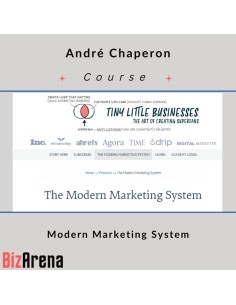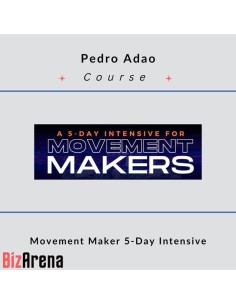Overview of “Stand Out or Fade Away – The Art of Positioning”
“Stand Out or Fade Away – The Art of Positioning” by Pedro Martins and Chris Dyson provides a strategic guide for brands seeking distinction in competitive markets. This book centers on robust branding and precise market positioning, offering tactical insights for businesses to thrive.
Key Concepts Introduced by Pedro Martins and Chris Dyson
Martins and Dyson emphasize the necessity of identifying a brand’s unique value proposition. They introduce methods such as competitive analysis, consumer profiling, and continuous brand evaluation. These techniques help brands carve a niche in their respective industries by highlighting what makes them special.
Structure and Style of the Book
The book is structured in a straightforward, accessible manner with each chapter dedicated to a different aspect of branding and positioning. Martins and Dyson use a mix of case studies, theoretical models, and real-world examples to illustrate complex concepts, making them relatable and easier to understand for readers across different levels of expertise.
Core Themes in “Stand Out or Fade Away”
Pedro Martins and Chris Dyson’s work presents critical insights into achieving sustainable brand prominence. In “Stand Out or Fade Away,” they discuss key strategies for brands striving to make an indelible mark in their respective industries.
The Importance of Brand Positioning
Success in today’s saturated market hinges on effective brand positioning. Martins and Dyson emphasize that a well-defined position lets a brand cut through the clutter and capture the attention of the intended audience. Brands position themselves by emphasizing their unique selling propositions (USPs), which distinguishes them from competitors and cements their market standing.
Strategies for Differentiation in Competitive Markets
In competitive markets, differentiation is a cornerstone of business strategy. The authors detail approaches such as leveraging brand storytelling, adopting innovation, and focusing on customer experiences. These strategies enable businesses to stand out by offering something unique to consumers, thereby not just attracting but also retaining their interest and loyalty.
Case Studies Highlighted in the Book
In “Stand Out or Fade Away,” Pedro Martins and Chris Dyson employ numerous case studies to demonstrate the power of effective positioning and the pitfalls of failing to establish a unique market identity.
Success Stories of Effective Positioning
By examining brands like Apple and Tesla, the book outlines how these companies have successfully differentiated themselves through innovation and strong customer engagement. Apple’s emphasis on design and user experience, and Tesla’s commitment to sustainability and high-performance electric vehicles exemplify successful positioning that captures and retains market attention.
Lessons from Failed Positioning Attempts
Contrastingly, the book reviews cases where companies like Kodak and Blockbuster faltered due to inadequate adaptation to changing markets. Kodak’s slow response to digital photography and Blockbuster’s delayed adoption of online streaming services showcase the significant consequences of ignoring market evolution and emerging consumer preferences.
Practical Applications and Tips
Drawing from Pedro Martins and Chris Dyson’s insights, I’ll detail how businesses can harness the power of positioning to stand out in their markets. Let’s jump into practical applications and supportive tools that can translate these concepts into actionable strategies.
How Businesses Can Apply These Concepts
Businesses can use the positioning strategies described by Martins and Dyson by firstly identifying their unique value proposition. This involves deeply understanding customer needs, analyzing the competitive world, and sharply defining what sets their offerings apart. Implementation of these steps leads to a brand’s enhanced visibility and distinct market identity.
Tools and Frameworks for Positioning
To effectively position a business, I suggest employing tools such as SWOT analysis for internal and external insights, and Porter’s Five Forces to understand market dynamics. Also, frameworks like the Value Proposition Canvas help businesses align their products with customer expectations and desires, fostering a stronger market position.
Conclusion
Embracing the insights from “Stand Out or Fade Away” by Pedro Martins and Chris Dyson has never been more crucial. As I’ve explored throughout this post the strategies and real-life applications they propose are not just theoretical but are vital tools for anyone looking to carve a unique space in today’s hyper-competitive environment. Whether you’re repositioning a global corporation or just starting out with your personal brand the methodologies outlined are designed to elevate your presence and ensure you’re not just another name in the crowd.Remember the power of a well-defined brand position can transform your strategy from ordinary to extraordinary. It’s about more than just being different—it’s about being strategically distinct in a way that resonates with your target audience. Let’s take these lessons and not just stand out but truly own our space in the market.
Frequently Asked Questions
What is the main focus of the book “Stand Out or Fade Away” by Pedro Martins and Chris Dyson?
The book emphasizes the importance of differentiation through effective branding and marketing strategies to achieve prominence in crowded markets. It provides a strategic guide for entities, ranging from global corporations to personal brands, to carve a unique niche and capture audience attention successfully.
How do Martins and Dyson suggest brands can differentiate themselves?
Martins and Dyson recommend identifying a unique value proposition and employing tactics like competitive analysis, consumer profiling, and ongoing brand evaluation. They also emphasize leveraging brand storytelling, embracing innovation, and enhancing customer experiences to create distinction in competitive markets.
What practical tools does the article suggest for applying the concepts from the book?
The article suggests using tools such as SWOT analysis, Porter’s Five Forces, and the Value Proposition Canvas. These tools help brands understand customer needs, analyze competitive dynamics, and align their products and services with market expectations effectively.
Can you provide examples of both successful and unsuccessful brand positioning mentioned in the article?
Successful examples include Apple and Tesla, which used innovation and strong customer engagement to create distinct identities. Unsuccessful examples include Kodak and Blockbuster, which failed to adapt to market changes and consumer preferences, illustrating the risks of poor positioning.
What is the relevance of continuous brand evaluation according to the book?
Continuous brand evaluation is crucial for maintaining relevance and competitiveness. It helps brands stay attuned to market changes, consumer behavior, and emerging trends, ensuring the brand’s value proposition remains compelling and distinctive in the evolving market landscape.
Sales Page: https://learn.ppmartins.com/flow/positioning-book-2/positioning-book-landing/



 (1).png)















